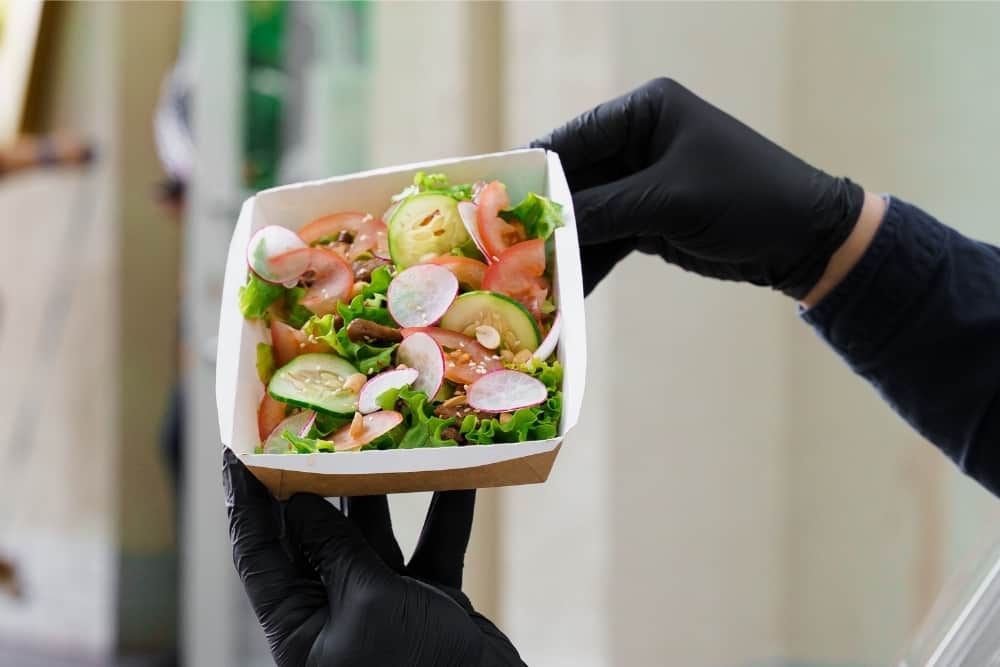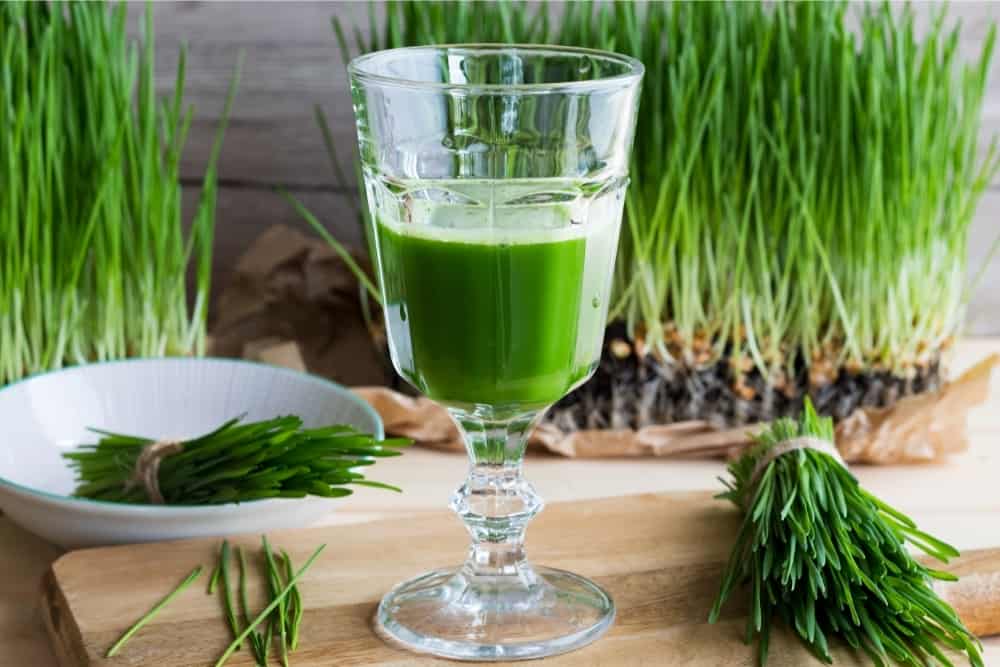Before using, growing, or buying microgreens, you must know the “Microgreens Health and Safety Considerations” for a better experience!
A long-time staple of high-end restaurants and hip downtown gastronomic experiences, microgreens are increasingly becoming a popular choice among health enthusiasts for various reasons. But what are these supposed “superfoods, and how do you safely grow them and add them to your diet?
Microgreens are any one of over 60 different types of vegetables that resemble small sprouts. They’re actually seedlings harvested from many common vegetables early in the growth phase of their lives. They offer a variety of health benefits and are commonly incorporated into sandwiches and salads.
If you order a sandwich at a cafe or restaurant these days, you may notice that they’re covered with tiny vegetable sprouts instead of lettuce and tomatoes. These microgreens are said to have numerous health benefits and are relatively easy to grow in the comfort of your own home. Keep reading for a complete guide to how to incorporate them into your health goals safely.
What Are Microgreens?
Microgreens are the seedlings of a variety of vegetables. There are right around 60 different varieties of microgreens. They’re called microgreens because of their small size, relatively speaking. They’re similar to sprouts, although microgreens are farther along in their development than sprouts.
They can easily be added to a variety of dishes, meals, or even smoothies without significantly affecting the taste of the dish, which is nice for people who don’t necessarily enjoy eating vegetables. They’re also commonly used for garnishes, although this use will take away their health benefits.
Microgreens can come from a wide variety of vegetables, and each vegetable will provide unique microgreens with different colors, textures, and tastes. Just a few of these vegetables include:
- Kale
- Red cabbage
- Mustard
- Broccoli
- Parsley
- Peas
- Cabbage
- Cauliflower
- Carrots
- Basil
- Arugula
- Radish
- Fennel
- And many more!
Growing Process
Germinated seeds are self-contained growing machines, with all the nutrients inside them that are able to get them to sprout and grow. Microgreens are seedlings; seeds that have sprouted a stem, leaves, and roots. There will be more information on how to grow microgreens later in this article, but suffice it to say that about 3 weeks after they’re planted, they’re ready to harvest.
Microgreens can be grown in pretty much any sort of container, anywhere in your house that gets enough sunlight. They need about four hours of sun per day to grow effectively. You can help them grow quicker by using specially formulated soil that provides nutrients for germination, as well as use fertilizer to help them grow.
When Should Microgreens Be Harvested
Microgreens are harvested at a very specific time after the seed is germinated, planted, and starts to sprout. They’ve developed some actual leaves, a stem, and roots, but they’re still very early in their development. They’re grown in soil, as opposed to sprouts, which are soaked in water instead of being planted in soil.
Eating microgreens regularly may provide several health benefits, and they’re easy to grow yourself in the comfort of your own home. If you’re looking for a complete guide to starting your own microgreens operation and adding them to your diet, look no further. This article will discuss how to safely and effectively start eating microgreens yourself.
Where to Find Microgreens
It can be difficult to find microgreens in your local grocery store, especially if you shop at a larger chain grocery store. Local grocery stores that specialize in providing fresh, organic fruits and vegetables that are locally sourced will probably be a better choice because microgreens have a very short shelf life. They often only last up to a couple of days before they’ll go bad.
Many restaurants, especially upscale places, also use microgreens in their dishes. It’s a commonly used garnish because of their beautiful colors, and they’re becoming an increasingly popular addition to sandwiches and salads both for their perceived health benefits and their appeal as a garnish. They’re even used as ingredients in health smoothies or baked goods.
Apart from locally sourced organic grocery stores or in hip health-food eateries, possibly the most common place to find microgreens are as home-grown vegetables in many people’s houses. Microgreens are easy to grow, and they’re ready to harvest in a short amount of time, making them a good option for people without a lot of space or time for a full garden.
How to Grow Your Own Microgreens
Growing your own microgreens at home is a relatively simple process, even if you don’t have a green thumb. You can grow as many as you want, depending on the space you have available to you. They grow in very small containers due to their lack of any significant root structure, and they’re ready for harvest so quickly that you can easily have them growing year-round.
Microgreens are often compared to sprouts, but they’re actually grown in a very different manner. Sprouts are grown by submerging germinated seeds in water (often hydroponically) which encourages rapid emergence and growth of the sprouts. They’re also harvested much earlier in their growth than microgreens, often before they’ve developed any “true” leaves.
There’s not much to growing microgreens, but here is an example checklist that will help you get your microgreens to sprout more quickly and efficiently. Before you get started, you’ll need the following items:
- Clear plastic container (like a container that holds vegetables at the store), or any tin or plastic tray to plant your microgreens in
- Spray bottle (to mist your soil and avoid drenching it)
- Soil (try and find a good soil that has nutrients that promote rapid germination)
- Fertilizer (to feed your seeds once they’ve grown into seedlings)
- Seeds (whatever type you want is fine)
- Damp paper towels to line the growing container
Prepare Your Soil and Growing Tray
Line the tray or container you’ll be growing your seeds in with a damp paper towel, and fill it with soil. Something like this specially formulated soil from Amazon will help your seeds germinate quickly by providing them all the nutrients they need, which will then provide you with more nutrient-rich microgreens.
Prepare Your Seeds
The first thing you need to do is prepare larger seeds by soaking them in warm water overnight. Small seeds, like mustard seeds, don’t need to be soaked at all. This step helps your seeds germinate quicker. You can put them in a bowl or bag to soak overnight, but make sure you drain your seeds out the next day before you plant them.
Plant Your Seeds
Planting your seeds is simple enough; just sprinkle them over the soil in your container. You can either press them gently into the soil or sprinkle another thin layer of topsoil over them. Once that’s done, lightly spray the soil to keep it moist, and place it in a sunny, warm spot in your house. Keep checking your seeds at least daily to make sure the soil stays damp.
Care for Your Seeds
The final step in the process before harvesting your microgreens is to care for your seeds for the 1-3 weeks before they’re ready for harvest. You need to keep the soil moist, but don’t water the seeds too much or you’ll drown them. You also want to create a warm, humid growing environment for them by placing a plastic cover over the top of the growing tray.
Once the new seedlings have reached about 2 inches in height and have sprouted a couple of true leaves, they’re ready for harvest. Use a pair of kitchen shears or gardening pruners to cut your microgreens. All you have to do is snip them off right above the soil level and they’re ready to wash and eat!
You can have multiple containers of different types of microgreens at different stages of development around your house so you can always enjoy fresh greens year-round. You can also maximize your space by using vertical racks and use growing lights to provide UV light to your microgreens so you’re not dependent on sunlight.
This can help you have your microgreens grow on a cycle so you always have microgreens ready to harvest. Once one container is harvested, replant in the same container!
Microgreen Safety Tips
If you’re growing your own microgreens, you should rest assured knowing that they haven’t been contaminated by pesticides or grown non-organically. As long as you follow the steps above and make sure to wash your freshly harvested greens, there really aren’t any additional safety tips.

Microgreens do go bad after several days of being cut, though, so you’ll want to leave them planted until the day you plan to use them if at all possible. Otherwise, they’ll probably go to waste. If they have a weird smell or they feel slimy, toss them. You don’t want to get food poisoning because of eating bad microgreens.
E. coli is sometimes an issue for farm-grown vegetables; every so often you might hear of a recall on lettuce because of an E. coli outbreak at the processing plant or something. This is less of a concern with microgreens because of how they’re grown. Stay informed and the more you know about where your microgreens come from, the safer you’ll be.
If you get your microgreens from a private seller, make sure you know how they’ve been grown. While it’s hard to mess up microgreens, you can’t be too careful. You should verify what type of microgreens you’re purchasing to make sure you’re not allergic to whatever it is you’re eating. It’s pretty simple to identify microgreens by the way they look so this shouldn’t be too difficult.
Sprouts are typically considered to be more likely to be contaminated because they’re grown in a different environment than microgreens. This is because they’re grown hydroponically, which is a growth method that can promote bacteria and algae growth. Microgreens are often grown in areas with high light without as much dampness, which keeps bacteria growth at bay.
When you’re purchasing fresh microgreens from a grocery store, make sure they’re actually fresh. Again, microgreens that are starting to look brown or give off an unpleasant odor are probably beyond their shelf-life and shouldn’t be purchased. If you’re concerned about pesticides, be sure to buy your microgreens from a reputable seller.
Health Benefits of Microgreens
Microgreens are alleged to have multiple health benefits you can receive in exchange for adding them to your diet. These benefits can possibly include:
- Nutrient richness
- High antioxidant content (polyphenols)
- Heart health
They’re also sustainably grown (especially if you grow them yourself), and easy and convenient for people who live in small apartments or areas where they can’t garden. Indoor plants are also linked to better mental health, so just the act of growing them can have positive health benefits.
Nutritional Benefits
As mentioned above, microgreens are vegetables and they offer a variety of health benefits. Because they’re so small, they may not be as off-putting to people who don’t like eating full-grown vegetables, but they still offer many of the same benefits.

Microgreens pack a lot of nutritional value into a small amount of food. They have the same amount of nutrients found in their full-grown plant counterparts but packed into a much smaller package. Eating a handful of microgreens could give you the same amount of nutrients as you’d find in a full-blown salad.
They’re also good because you can grow a wide variety of different microgreens in such a small space, so you can get the varied nutrients each type provides. Here’s a brief list of some of the nutrients provided by the most common microgreens:
| Microgreen | Nutrients |
|---|---|
| Broccoli | Vitamin C, Protein, Potassium, Manganese, Iron |
| Kale | Vitamins A, K, C, B6, Manganese, Potassium, Fiber, Calcium, Copper |
| Radishes | Vitamin K, Potassium, Calcium, Riboflavin, Magnesium |
| Red Cabbage | Vitamins A, C, B-6, Calcium, Iron |
| Fennel | Potassium, Vitamin C, Vitamin B-6, Iron, Vitamin A |
| Basil | Vitamin K, Zinc, Calcium, Magnesium, Potassium and Fiber |
Clearly, eating microgreens daily can help you get the nutrients you need to stay healthy in a smaller package than with full-grown vegetables. But that’s not their only benefit by a longshot. Microgreens are also rich in antioxidants like other vegetables.
Antioxidants
Microgreens are also high in antioxidants because of the presence of polyphenols, which are naturally-occurring chemicals in many different plants. Having a diet that’s high in antioxidants has been found to possibly reduce a person’s risk for cancer, heart disease, and Alzheimer’s, among other diseases because they block things called free radicals in your body.
Heart Health
Another major benefit of eating microgreens is their link to possibly reducing a person’s risk for heart disease. Since heart disease is the leading cause of death in the United States, anything is worth considering to try and avoid it.
Along with exercise and avoiding foods that are high in fat, eating a diet that’s high in vegetables has been linked to a decreased risk for heart disease as well. This is also linked to the fact that a diet that’s high in vegetable intake is tied to lower rates of obesity among American adults.
Apart from heart health, eating vegetables, in general, provides many benefits. They can help you avoid gaining weight, and they’ve been linked to lower rates of obesity. Microgreens also go well together, so you can get a variety of nutrients in just one or two batches. You can mix and match microgreens easily to get the benefits of eating a variety of vegetables.
Other Benefits
Microgreens can provide a number of other benefits as well, and there are several great reasons to start growing and eating them yourself. Having houseplants is tied to better mental health, and there are also psychological benefits to having hobbies in general.
Microgreens are simple to grow as well; other than occasional watering and the brief steps to get them planted, they don’t require much work. All you have to do is make sure the soil stays moist at all times and that they’re getting enough sun. Even if you forget to water them, though, they’ll survive for a day or so and then bounce right back when you do water them.
Microgreens are an inexpensive way to add some vegetables to your diet. We all know how expensive fresh produce can be at the grocery store; a couple of different types of microgreens can be grown for less than a few dollars. It even lets you recycle some old plastic or tin containers you might otherwise throw in the garbage, so you’re helping the environment.
One last benefit of microgreens is that they’re sustainable. As long as you want to grow them, you can, and you can help the environment by cutting down on how much farm-grown produce you consume. You can literally grow them all year round, which may also help keep your grocery bill down if you can entirely stop purchasing leafy greens.
Best Ways to Eat Microgreens
You’re really only limited by your imagination when it comes to fitting microgreens into your diet, but they also tend to have a relatively strong taste so some types may not be suitable for certain dishes. Here are five great ways to fit microgreens into your diet without too much hassle. Anyone can do this to gain the benefits of eating microgreens.
Put Them on a Sandwich
Lettuce on a sandwich is old news. Gourmet sandwiches are made with microgreens. Put them on a breakfast sandwich to sneak some vegetables into a meal where they’re not normally found, put them on your favorite egg, tuna, or chicken salad sandwich, and throw some avocados on there for a great lunch treat.
Add to Healthy Smoothies
Another great thing you can do with microgreens is to add them to a smoothie. You may be surprised to learn that spinach often forms the base for a lot of healthy smoothies, but microgreens may make a better substitution due to their tenderness. You won’t even taste them and they’ll give you a great way to get your veggies in for the day.
Sprinkle on top of Entrees
You can take microgreens and sprinkle them on top of a variety of dishes like pizzas, pasta, soups, salads, and hamburgers; the list goes on and on. Microgreens can add a pop of color, a different flavor, and some leafy texture to any dish.
Add Them to Baked Goods
Who says leafy greens need to be eaten raw? You can substitute microgreens anywhere you’d include leafy greens like spinach, like in a quiche. You can also grind or mash them up and add them to baked goods like pancakes, pies, or loaves of bread for nutrients.
Make Them a Salad
Of course, you could go the simple route and just make a salad consisting entirely of microgreens as well. There are plenty of great pairings you can find online, and you’ll get the added benefit of a beautifully diverse salad with a variety of nutrients.
Earning Money from Selling Microgreens
You can also earn money from selling microgreens. Microgreens can be a very profitable crop to grow if you can find buyers for your product, mainly due to the quick growth time and the small growing space they require. They can sell for up to $50 a pound in some markets.
If you’re growing your own microgreens and you’re interested in possibly selling them for a profit, consider some of these pros and cons for selling microgreens. If you do it right, you could have a good side-hustle going that doesn’t require a ton of time, energy, money, or space to accomplish and bring in a healthy income on the side.
| Pros | Cons |
|---|---|
| Don’t take a lot of space to grow | Can be difficult to find customers |
| Very small upfront costs | Limited to selling locally due to short fridge life |
| Quick turnaround – crops ready to harvest in as little as three weeks | May require a spare room or garage space if you’re selling high volume |
| High price per pound | As your business scales, it will require more time to care for |
| Can grow year-round | May need extra growing supplies as the business grows, which takes up space and money. |
Potential Customers
If you’re growing microgreens and selling them locally, you have a few options on who your customers will be. If you want to have a massive operation going, you might be supplying several or all of these different types of customers with their microgreen needs.
First, you might sell microgreens to local grocery stores. Grocery stores are a great client because they’ll likely have a revolving need for microgreens, giving you consistent orders and income. If you’re trying to supply a grocery store, you’ll probably have large orders so you may need to increase your microgreen output.
You may sell to local restaurants as well. Again, restaurants may provide consistent orders and income, and their needs will vary based on how large they are. They may also have seasonal needs if they only sometimes make dishes that require microgreens.
Another potential customer is other people who may not have the time, inclination, or knowledge to grow their own. You may see if your neighbors, friends, or family would be willing to purchase from you first, then let word of mouth advertising take it from there. You could also advertise in local online yard sale groups or local business pages on social media to find customers.
Finally, you could look at supplying private chefs, if they’re prevalent in your neighborhood. Chefs may place weekly orders with you, giving you consistent income. If you go this route, try and get the chef to have a weekly standing order for a set number of pounds of microgreens. This way, you can get into a rhythm and have repeat customers.
How Much You Could Potentially Make Selling Microgreens
You’re only limited by how much space you have to grow and how many clients you can supply regularly, but microgreen growers can make anywhere from $25-$50 per pound in some locations.
There are growers that operate 60 square feet of growing space utilizing racks to maximize space that can produce up to 50 pounds of microgreens every two weeks, which translates to between $1250 and $2500. This may not be enough to replace your 9-to-5 job, but it can provide a healthy side-income and a fun hobby as well.
Final Thoughts
Microgreens have been steadily gaining in popularity for years, as health-conscious consumers try and fit vegetables into their daily diets in increasingly novel and creative ways. Microgreens provide a nutrient-dense option for people who may not necessarily enjoy eating regular vegetables but still want the nutritional benefits.
Microgreens from all sorts of vegetables provide a variety of health benefits, and they’re easy and inexpensive to grow yourself if you don’t want to buy them. They also don’t take up a lot of space, making them a wonderful option for urban gardeners or people without the space to plant a traditional garden. Try growing them yourself!

